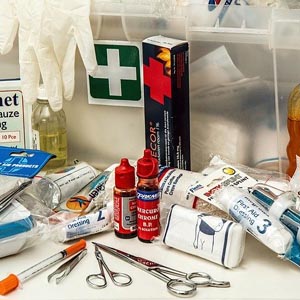 Smart Citations
Smart CitationsSee how this article has been cited at scite.ai
scite shows how a scientific paper has been cited by providing the context of the citation, a classification describing whether it supports, mentions, or contrasts the cited claim, and a label indicating in which section the citation was made.
Non-operative management in blunt splenic trauma: A ten-years-experience at a Level 1 Trauma Center
Trauma;
Spleen injuries are among the most frequent trauma-related injuries. The approach for diagnosis and management of Blunt Splenic Injury (BSI) has been considerably shifted towards Non- Operative Management (NOM) in the last few decades. NOM of blunt splenic injuries includes Splenic Angio-Embolization (SAE). Aim of this study was to analyze Pisa Level 1 trauma center (Italy) last 10-years-experience in the management of Blunt Splenic Trauma (BST), and more specifically to evaluate NOM rate and failure. Retrospective analysis of all patients admitted with blunt splenic trauma was done. They were divided into two groups according to the treatment: hemodynamically unstable patients treated operatively (OM group) and patients underwent a nonoperative management (NOM group). The CT scan performed in all NOM group patients. Univariate analysis was performed to identify differences between the two groups. Multivariate analysis adjusting for factors with a p value < 0.05 or with clinical relevance was used to identify possible risk factors for NOM failure. 193 consecutive patients with blunt splenic trauma were admitted. Emergency splenectomies were performed in 53 patients (OM group); 140 were managed non-operatively with or without SAE (NOM group). NOM rate in high grade injuries is 57%. Overall NOM failure rate is 9%, and success rate in high grade splenic injuries is 48%; multivariate analysis showed AAST score ≥3 as a risk factor for NOM failure. Non-operative management currently represents the gold standard management for hemodynamically stable patient with blunt splenic trauma even in high grade splenic injuries. AAST ≥3 spleen lesion is a failure risk factor but not a contraindication to for non-operative management.
Downloads
Citations
10.7759/cureus.55384
How to Cite
PAGEPress has chosen to apply the Creative Commons Attribution NonCommercial 4.0 International License (CC BY-NC 4.0) to all manuscripts to be published.

 https://doi.org/10.4081/ecj.2022.10339
https://doi.org/10.4081/ecj.2022.10339





